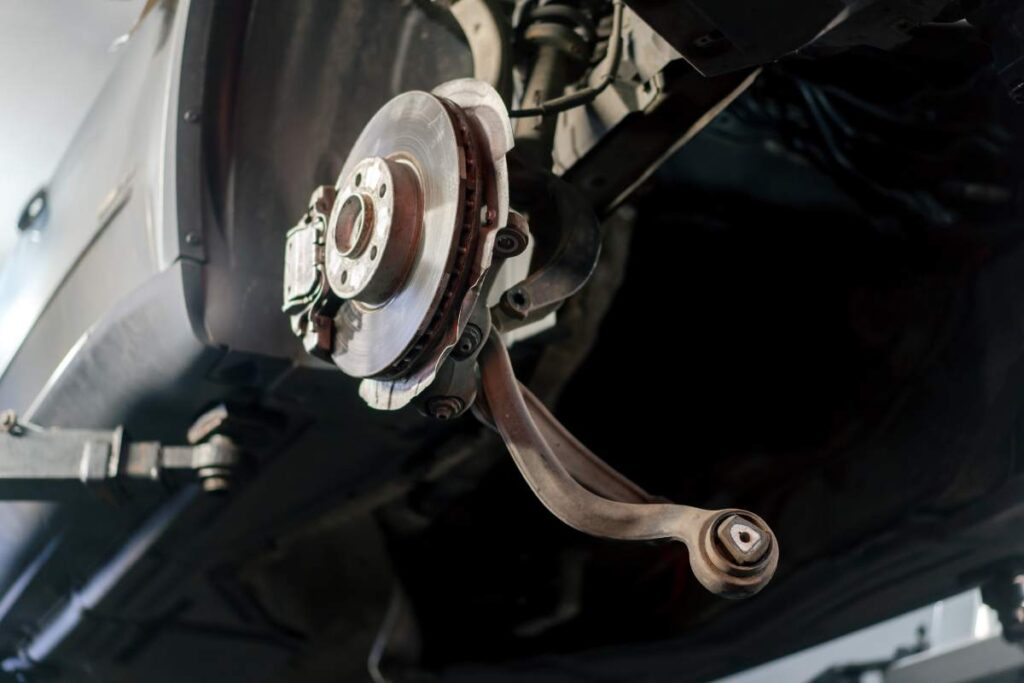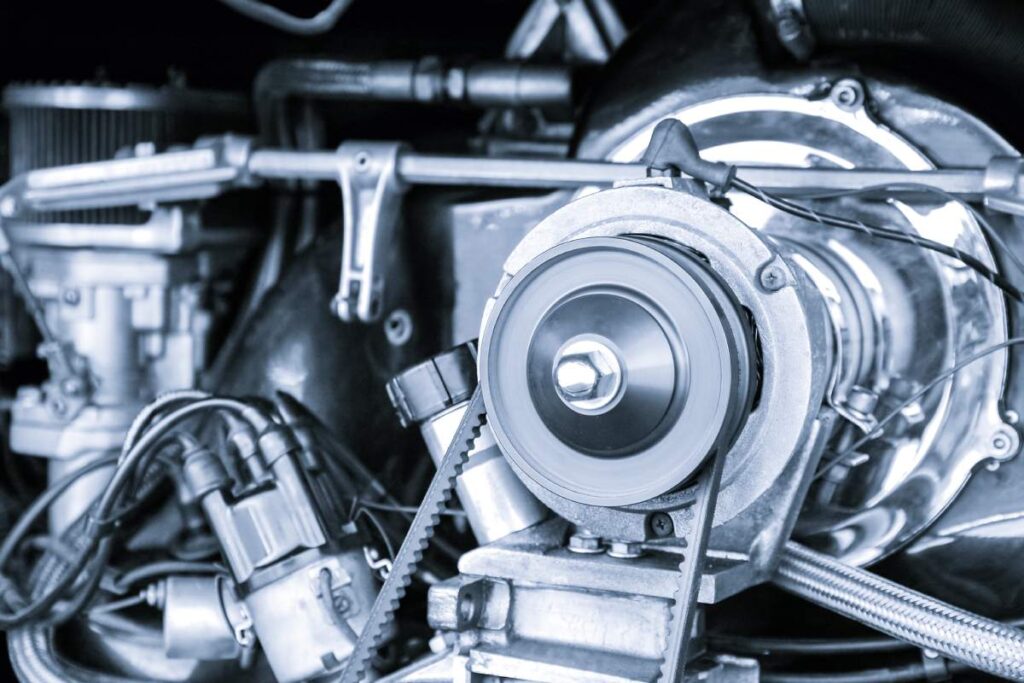Engine braking is a term many drivers have heard but may not fully understand, especially when it comes to how it compares to regular brakes. Engine braking is a method used by drivers, particularly in manual transmission vehicles, to slow down the car without relying solely on the braking system.
This technique, while effective and commonly used in specific driving situations, functions differently from regular brakes and has unique benefits. Let’s dive into what engine braking is, how it works, and when it’s best used compared to normal brakes.
What is Engine Braking?
Engine braking is a process in which a driver reduces the vehicle’s speed by letting off the accelerator pedal and shifting to a lower gear. This manoeuvre slows the vehicle by using the engine’s natural resistance rather than engaging the traditional brakes. When the accelerator is released, the car’s momentum causes the engine’s RPM (revolutions per minute) to drop, leading to a drag force that gradually slows the vehicle down.
Engine braking is especially useful when driving downhill or on slippery roads, as it gives the driver more control and reduces the risk of the wheels locking up. While it’s more common in manual transmissions, modern automatic vehicles can also incorporate some level of engine braking through features like “manual mode” or by selecting lower gears.
How Does Engine Braking Work?
In a typical internal combustion engine, when you release the accelerator, the throttle plate closes. This restricts the air entering the engine, creating a vacuum that slows down the vehicle as it resists the flow of air-fuel mixture. This effect is why you’ll feel the car decelerate without touching the brake pedal. It’s a natural drag produced by the engine itself when it’s not receiving fuel to maintain high RPM.
For diesel engines, which lack throttle plates, engine braking occurs differently. Many diesel engines use a device called a “Jake brake,” or Jacobs brake. This technology alters the valve timing, allowing compressed air within the engine to be released, creating resistance and significantly slowing down the vehicle.

The Difference Between Engine Braking and Regular Brakes
Normal brakes, also known as service brakes, are the primary method for stopping or slowing a vehicle. There are two types of service brakes:
- Disc Brakes: These work by using callipers to squeeze brake pads against a disc or rotor attached to the wheels.
- Drum Brakes: These have brake shoes that press outward against a spinning drum attached to the wheel.
When you press the brake pedal, hydraulic fluid transfers pressure to these components, creating friction that slows or stops the car. Unlike engine braking, which uses the engine’s resistance to decelerate, service brakes directly act on the wheels to reduce speed.
Key Differences in Mechanics and Use
- Control and Gradual Deceleration: Engine braking provides a smoother, controlled deceleration compared to regular brakes. This is particularly useful on long downhill stretches, where continuous use of the brakes could cause them to overheat.
- Wear and Tear: Frequent braking can cause wear on the brake pads and rotors, eventually requiring maintenance or replacement. Engine braking reduces this wear by allowing the engine to absorb some of the deceleration work.
- Safety in Different Conditions: Engine braking is particularly effective in conditions where wheel lock-up could occur, like on icy roads. Since engine braking doesn’t rely on the braking system, it reduces the risk of the wheels skidding.
Advantages of Engine Braking
Engine braking offers several practical benefits, particularly in extending the lifespan of the braking system and enhancing safety under certain conditions. Here’s a closer look at these advantages:
1. Reduced Brake Wear
Regular braking can cause brake components, like pads and rotors, to wear out more quickly. Engine braking helps reduce this by taking some of the pressure off the braking system. Over time, this can mean fewer trips to the mechanic for brake replacements and a lower overall maintenance cost.
2. Improved Control on Slopes
When driving down a steep slope, applying regular brakes continuously can lead to overheating, which reduces braking efficiency. Engine braking provides a controlled descent without the risk of brake fade. This is particularly useful for heavy vehicles or those towing loads, where the braking system alone may struggle.
3. Better Fuel Efficiency
In modern fuel-injected engines, engine braking reduces fuel consumption because the fuel injectors stop injecting fuel when the throttle is released. This not only saves fuel but also reduces emissions, making engine braking an environmentally friendly choice.
4. Enhanced Safety on Slippery Roads
When road conditions are slippery, sudden braking can lead to loss of traction and increase the risk of skidding. Engine braking applies gradual deceleration, helping maintain traction on icy, wet, or gravel-covered roads.

When to Use Engine Braking
While engine braking is advantageous in several scenarios, it’s not a replacement for regular brakes. Understanding when to use engine braking and when to rely on normal brakes is key to safe and efficient driving. Here are some situations where engine braking is ideal:
- Descending Long Hills: Engine braking is highly recommended when going down steep hills. By using the engine to control speed, you prevent brake fade and maintain control.
- Driving in Slippery Conditions: On icy or wet roads, engine braking can be safer than regular braking, as it helps avoid locking the wheels.
- Gradual Deceleration: If you’re not in a hurry to stop, like approaching a red light or stop sign, engine braking can be a smooth way to gradually reduce your speed.
However, in situations where you need to stop quickly or in emergencies, regular brakes are necessary.
Limitations of Engine Braking
While engine braking has benefits, it also has limitations:
- Not as Effective in Emergencies: In cases of sudden stops, engine braking is not as responsive as regular brakes. Relying solely on engine braking in emergencies could increase the risk of collisions.
- More Effective in Lower Gears: Engine braking works best in lower gears, which means it’s more effective at lower speeds. This makes it ideal for slowing down gradually rather than for sudden deceleration.
- Increased Wear on Transmission: Excessive engine braking can strain the transmission and other engine components over time, particularly if the driver shifts gears too aggressively. Using the right technique is essential to prevent unnecessary wear.
Engine Braking in Automatic Cars
Engine braking is often associated with manual transmission vehicles, but it can also be used in automatic cars. Most modern automatic cars have a “manual mode” or specific settings for lower gears, which allow for engine braking. While automatic cars may not provide the same level of control as manual transmissions, drivers can still benefit from using engine braking when descending hills or slowing down gradually.
Is Engine Braking Safe for the Engine?
A common concern is whether engine braking can damage the engine. When used correctly, engine braking is generally safe and even beneficial for the engine in terms of fuel efficiency and wear reduction on the brakes. However, improper techniques, like downshifting too aggressively or engine braking at excessively high speeds, can place strain on the transmission and engine.
Using moderate engine braking, especially in lower gears, helps maximize safety without causing mechanical issues.
Conclusion
Engine braking is an effective technique to decelerate a vehicle by using the engine’s natural resistance rather than the brakes. Different from normal brakes, which use friction to reduce speed, engine braking provides a gradual deceleration that can extend brake lifespan, improve control, and enhance fuel efficiency.
While it’s highly beneficial in certain situations like descending hills or driving on slippery surfaces, it’s not a replacement for regular brakes. Used correctly, engine braking can improve driving safety and control, particularly in manual transmission vehicles, but it’s essential to understand when and how to apply it for the best results.






